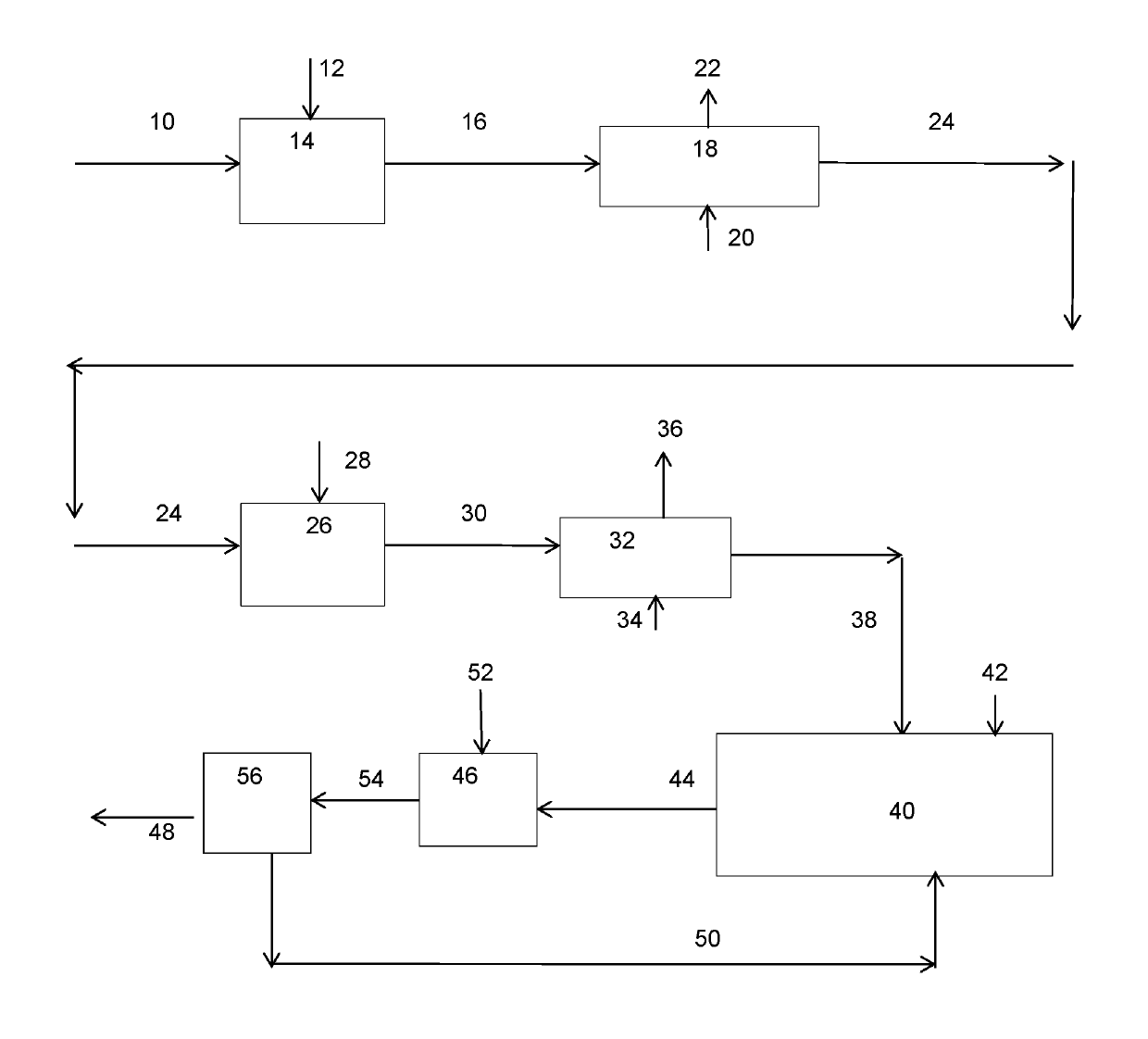Methods and compositions for the treatment of cellulosic biomass and products produced thereby
a cellulosic biomass and product technology, applied in the direction of finely divided material pretreatment, cellulose treatment using microorganisms/enzymes, enzyme stabilisation, etc., can solve the problems of limited widespread adoption of cellulosic sugar technology, high yield and high glucose concentration are difficult to achiev
- Summary
- Abstract
- Description
- Claims
- Application Information
AI Technical Summary
Benefits of technology
Problems solved by technology
Method used
Image
Examples
example 1
Treatment of Sugarcane Bagasse for Activating Cellulose
[0106]Various methods for activating cellulose were investigated using sugarcane bagasse. Sugarcane bagasse was subjected to either a first steam treatment step 220° C., 5 minutes residence time followed by a hot water wash using water at 80° C. or a first steam treatment followed by treatment with alkaline hydrogen peroxide. Alkali wash at 90° C., 60 minutes or 120 minutes, and 1% peroxide loading on solids.
[0107]As shown in Table 1, the use of the two-step treatment with a steam treatment step followed by alkaline hydrogen peroxide significantly increased the level of glucan and decreased the amount of lignin relative to treatment with steam and a hot water wash.
[0108]
TABLE 1Influence of alkaline peroxide treatment on the chemical compositionof the water insoluble component of steam pretreated and subsequentlyhot water washed sugarcane bagasse* (% dry weight). AHP-60 andAHP-120 refer to 60 minute and 120 minute treatments.Stea...
example 2
Enzymatic Hydrolysis of Activated Sugarcane Bagasse
[0109]The water insoluble cellulosic components prepared in Example 1 were then subjected to enzymatic hydrolysis for 72 hours. Comet additive S-001, comprising a mixture of a surfactant Tween 80 and a dispersant polyaspartic acid with a MW of 3500-4500 in a 1:1 ratio was also added to the enzymatic hydrolysis mix for the alkali treated sugar cane bagasse.
[0110]As shown in Table 2, enzymatic hydrolysis of alkali treated sugar bagasse in the presence of the Comet additive S-001 resulted in a glucose yield of 105.1 grams of glucose per gram of glucan, approaching the theoretical yield of ˜110 grams of glucose per gram of glucan.
[0111]
TABLE 2Monomeric glucose yield after the 72 hour enzymatic hydrolysisof the water insoluble cellulosic component of steam pretreatedand subsequently alkaline peroxide treated sugarcane bagasse(expressed as g per 100 g glucan**).SubstrateGlucose yieldHot water washed sugar cane bagasse79.1(2.6)***Alkali tr...
example 3
Treatment of Wheat Straw for Activating Cellulose
[0118]Methods for activating a cellulose feedstock were investigated using wheat straw. Wheat straw was subjected to a first steam treatment step at 220° C., 5 minute residence time, followed by a hot water wash at 80° C., followed by alkaline wash at 90° C. for 60 minutes and 1% peroxide loading on solids.
[0119]As shown in Table 6, the use of the two-step treatment with alkaline hydrogen peroxide resulted in water insoluble components with a high level of glucan (75.1%).
[0120]
TABLE 6Chemical composition of the water insoluble componentof steam pretreated and subsequently alkaline peroxidetreated wheat straw* (% Dry weight)Arabinan BDL***GalactanBDLGlucan75.1(0.6)Xylan8.1(0.1)MannanBDLLignin (Acid insoluble)**13.5(0.4)Acid soluble lignin0.4(0.0)Ash1.2(0.3)*Solids yield after the peroxide treatment was 75.7. Alkaline peroxide treatment was conducted at 10% consistency, pH 11.5 and 1% peroxide solution, 80° C. for 2 hours.**A minor fra...
PUM
| Property | Measurement | Unit |
|---|---|---|
| pressure | aaaaa | aaaaa |
| temperature | aaaaa | aaaaa |
| temperature | aaaaa | aaaaa |
Abstract
Description
Claims
Application Information
 Login to View More
Login to View More - R&D
- Intellectual Property
- Life Sciences
- Materials
- Tech Scout
- Unparalleled Data Quality
- Higher Quality Content
- 60% Fewer Hallucinations
Browse by: Latest US Patents, China's latest patents, Technical Efficacy Thesaurus, Application Domain, Technology Topic, Popular Technical Reports.
© 2025 PatSnap. All rights reserved.Legal|Privacy policy|Modern Slavery Act Transparency Statement|Sitemap|About US| Contact US: help@patsnap.com

